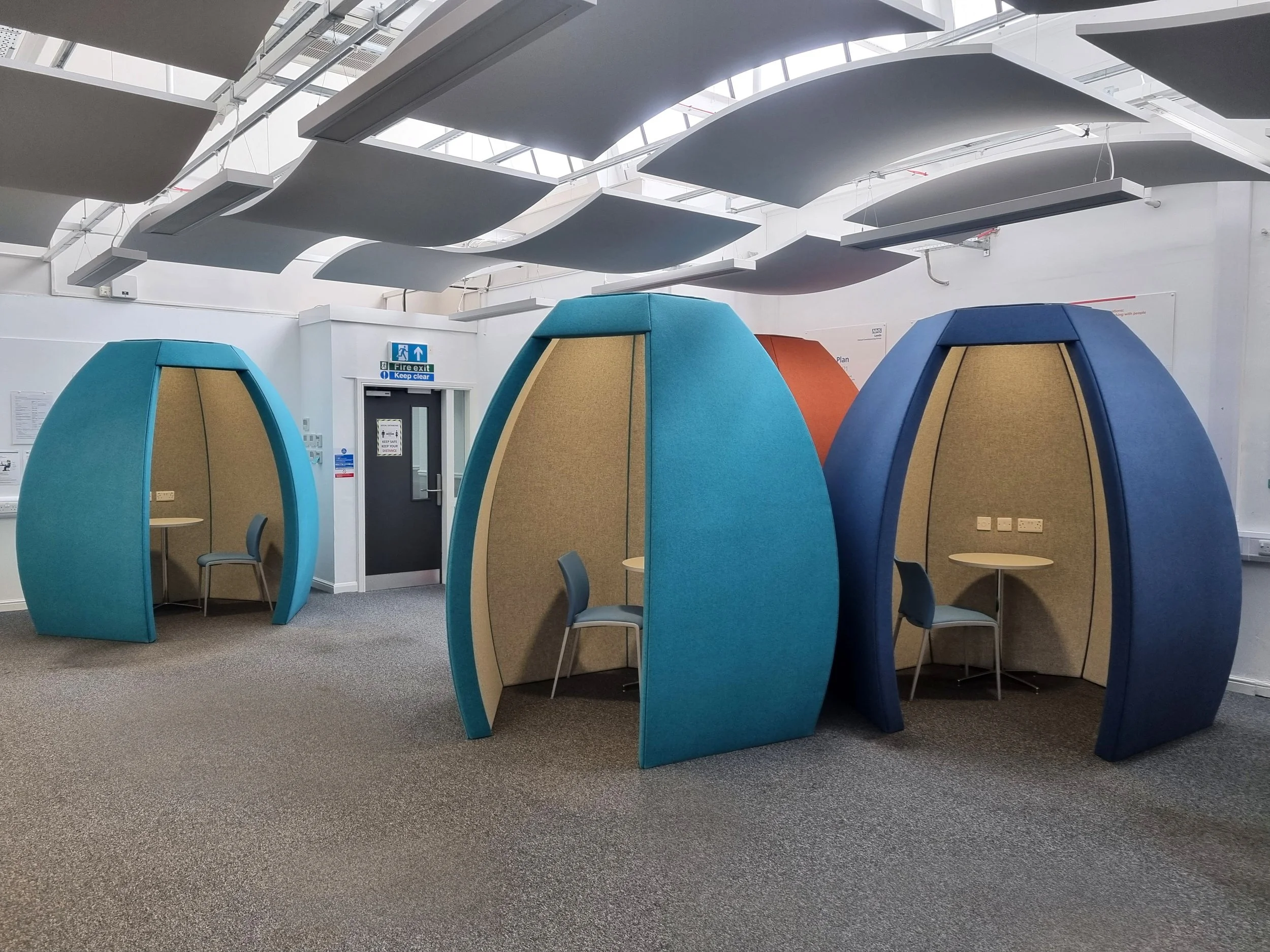The Role of Acoustic Furniture in Modern Healthcare Spaces
Author: Dr Lucy Hind, Property & Estates Professional, Synnovis
Date: 27.08.25
In healthcare environments, the focus is often on clinical excellence and patient care — but what about the spaces where staff work, patients wait, and families gather? Acoustics are rarely the first priority when designing a healthcare facility, yet they can have a profound impact on wellbeing, communication, and privacy.
From open-plan waiting areas to busy staff offices, excessive noise can create stress, reduce focus, and compromise patient confidentiality. Acoustic pods and acoustic furniture are becoming a key solution, offering quiet, private, and adaptable spaces within the often hectic atmosphere of hospitals and clinics.
Why Acoustics Matter in Healthcare
The healthcare sector is inherently noisy. Alarms, medical equipment, conversations, and footfall all contribute to a constant backdrop of sound. Research has shown that prolonged exposure to high noise levels can increase stress and fatigue, both for patients and staff.
For healthcare workers, who need to focus on critical tasks or hold sensitive discussions, noise can become a significant barrier. For patients, especially those waiting for appointments or recovering from treatment, a calmer environment supports better mental and emotional wellbeing.
The Role of Acoustic Pods
Acoustic pods provide a dedicated, quiet environment for meetings, consultations, or staff breaks — without requiring major renovations. Unlike traditional meeting rooms, pods can be installed quickly and moved or reconfigured as needs evolve.
In healthcare settings, pods are particularly valuable for:
Patient Confidentiality: Private conversations can take place without the risk of being overheard.
Staff Wellbeing: Pods offer respite areas for staff to recharge, away from the constant noise of the hospital floor.
Flexible Space Planning: Pods can be placed in underused corners or open areas, making better use of existing space.
Acoustic Furniture for Everyday Use
It’s not just pods. Acoustic furniture — such as high-backed seating, partition screens, and sound-absorbing panels — helps reduce overall noise levels across waiting areas and open-plan workspaces. For example, acoustic screens between workstations can cut down distracting noise while maintaining an open and collaborative feel.
This is particularly important in healthcare administration offices, pathology labs, and shared staff rooms where concentration is essential.
A Human-Centred Approach
At Synnovis, we’ve seen first-hand how acoustic solutions improve both staff efficiency and patient experience. A calmer, less noisy environment helps reduce errors, supports sensitive communication, and creates spaces that feel more welcoming.
Healthcare facilities are often complex, multi-use environments — and a one-size-fits-all approach doesn’t work. AgileAcoustics’ modular and customisable acoustic solutions make it possible to tailor every pod, screen, or panel to the specific needs of a hospital or clinic.
Looking Ahead
Noise is often considered an inevitable part of healthcare settings, but it doesn’t have to be. With thoughtful use of acoustic pods and furniture, we can create quieter, more private, and more supportive environments — for staff, patients, and families alike.






